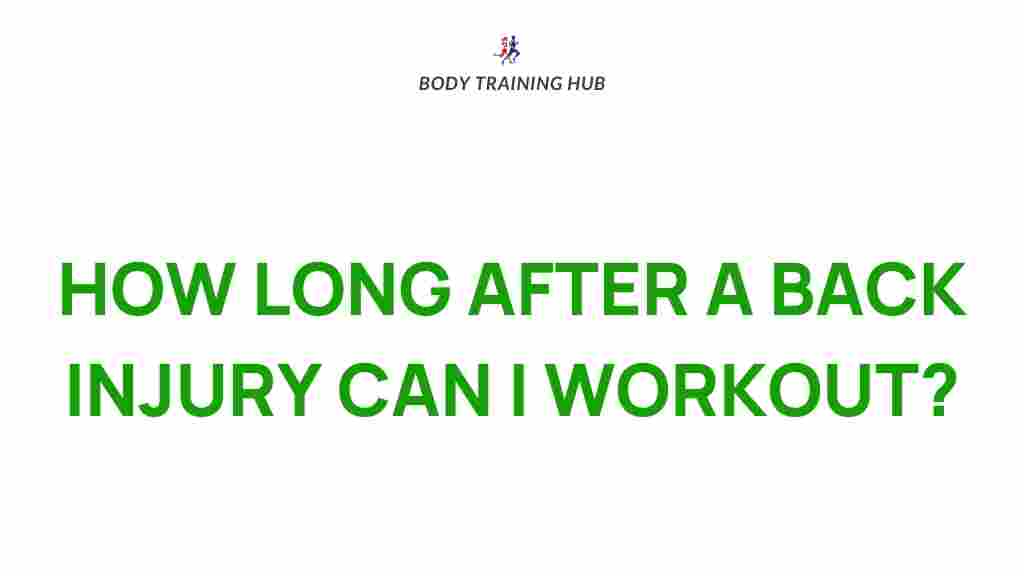Recovering from a back injury can be a challenging journey. Whether it’s a result of a sudden accident, poor posture, or overexertion, a back injury requires careful attention to heal properly. Exercise plays a pivotal role in recovery, helping to rebuild strength, improve flexibility, and prevent future issues. In this article, we unveil the secrets of post-back injury workouts to guide you safely back to your fitness routine.
How to Start Working Out After a Back Injury
Before diving into exercises, it’s essential to consult with a healthcare professional, such as a physical therapist or a chiropractor. They can provide a tailored recovery plan based on your injury’s severity and type. Once cleared, follow these steps to ease into post-back injury workouts:
Step 1: Focus on Gentle Movements
Start with low-impact exercises to prevent aggravating your back. Gentle movements like walking, water aerobics, or yoga can increase circulation and promote healing without placing undue stress on your spine.
Step 2: Incorporate Core-Strengthening Exercises
A strong core supports the spine and reduces the likelihood of re-injury. Begin with simple core exercises like:
- Pelvic tilts
- Bird-dogs
- Modified planks
Perform these exercises in short sessions, gradually increasing intensity as your back strengthens.
Step 3: Gradually Add Resistance Training
Resistance training is crucial for regaining strength after a back injury. Use resistance bands or light weights to perform exercises such as:
- Seated rows
- Chest presses
- Leg presses
Ensure proper form and avoid overloading your spine. A slow, controlled pace reduces the risk of strain.
Step 4: Emphasize Flexibility and Mobility
Tight muscles can exacerbate back issues. Include stretches and mobility exercises like:
- Cat-cow stretches
- Hamstring stretches
- Hip flexor stretches
These movements can alleviate tension and improve overall flexibility.
Common Challenges During Post-Back Injury Workouts
It’s not uncommon to encounter hurdles during your recovery. Here are some common challenges and how to address them:
Pain or Discomfort
If you experience pain during exercise, stop immediately. Pain is your body’s way of signaling that something isn’t right. Consult your healthcare provider to modify your workout plan.
Plateaus in Progress
Progress may feel slow at times. Be patient and consistent. Small, incremental gains are a sign of healing. Celebrate these milestones as they come.
Lack of Motivation
Staying motivated can be challenging. Enlist a workout buddy or consider joining a support group. Tracking your progress in a journal can also help maintain focus.
Advanced Tips for Sustained Recovery and Strength
Once you’ve built a solid foundation, you can advance your post-back injury workouts with these tips:
Maintain Proper Form
Always prioritize correct form over heavier weights or higher reps. Poor form can negate your efforts and increase the risk of re-injury.
Listen to Your Body
Recovery is not a one-size-fits-all process. Pay close attention to how your body responds to different exercises and adjust accordingly.
Seek Professional Guidance
A certified personal trainer or physical therapist with experience in post-injury rehabilitation can provide invaluable support. They can ensure your workouts are both safe and effective.
For additional guidance on workout programs, check out our comprehensive fitness guide. For professional advice, you may also consult this external resource from NSCA.
Conclusion
Recovering from a back injury requires a balanced approach that combines patience, consistency, and expert guidance. By following the steps outlined above, you can safely return to physical activity and even prevent future injuries. Always remember to consult with a healthcare provider before beginning any new exercise program and prioritize listening to your body.
Start small, celebrate progress, and maintain focus on long-term health. Your recovery journey can be a transformative experience that leaves you stronger, more resilient, and better equipped to handle physical challenges in the future.
This article is in the category Strength & Recovery and created by BodyTraining Team
